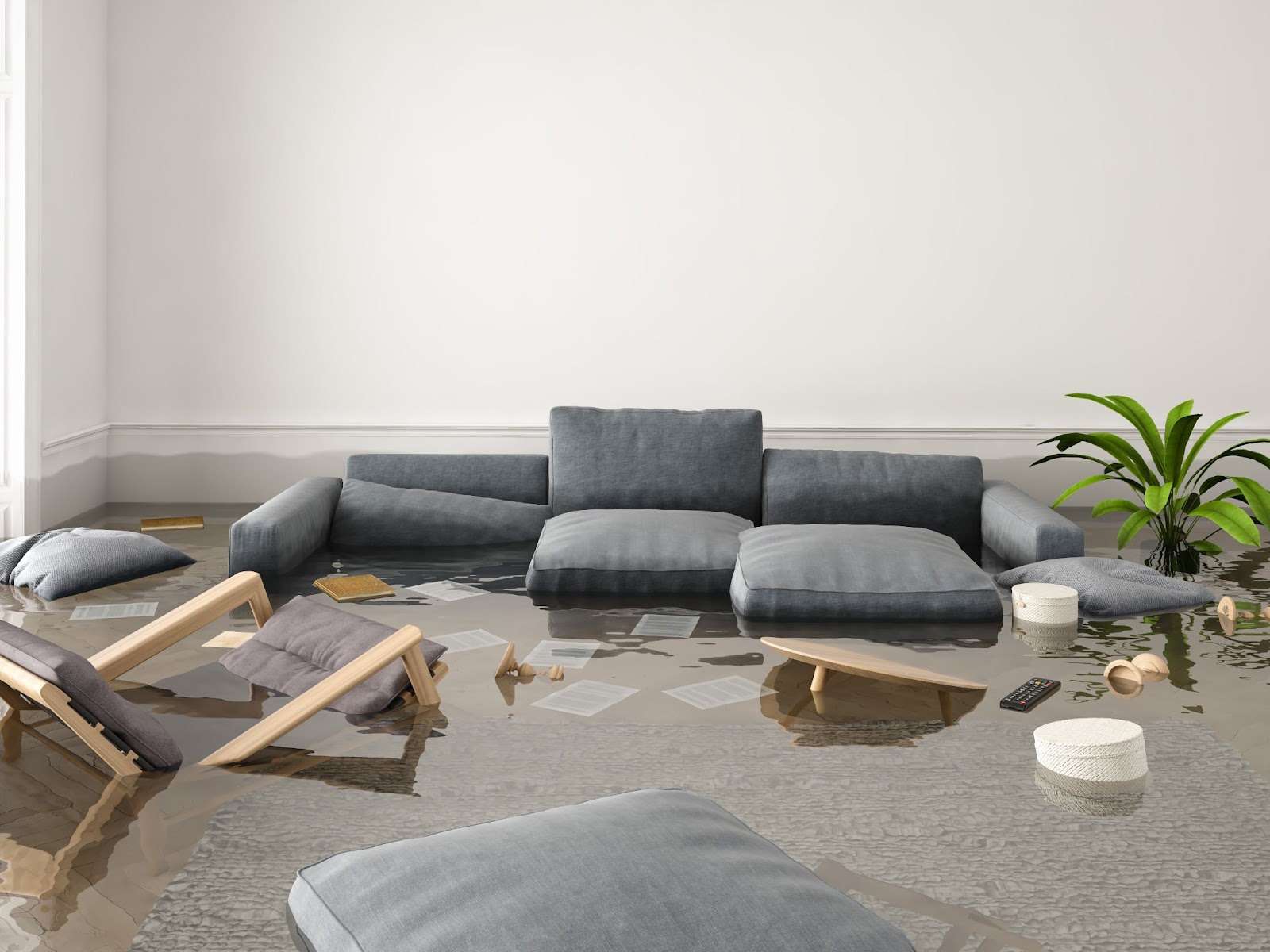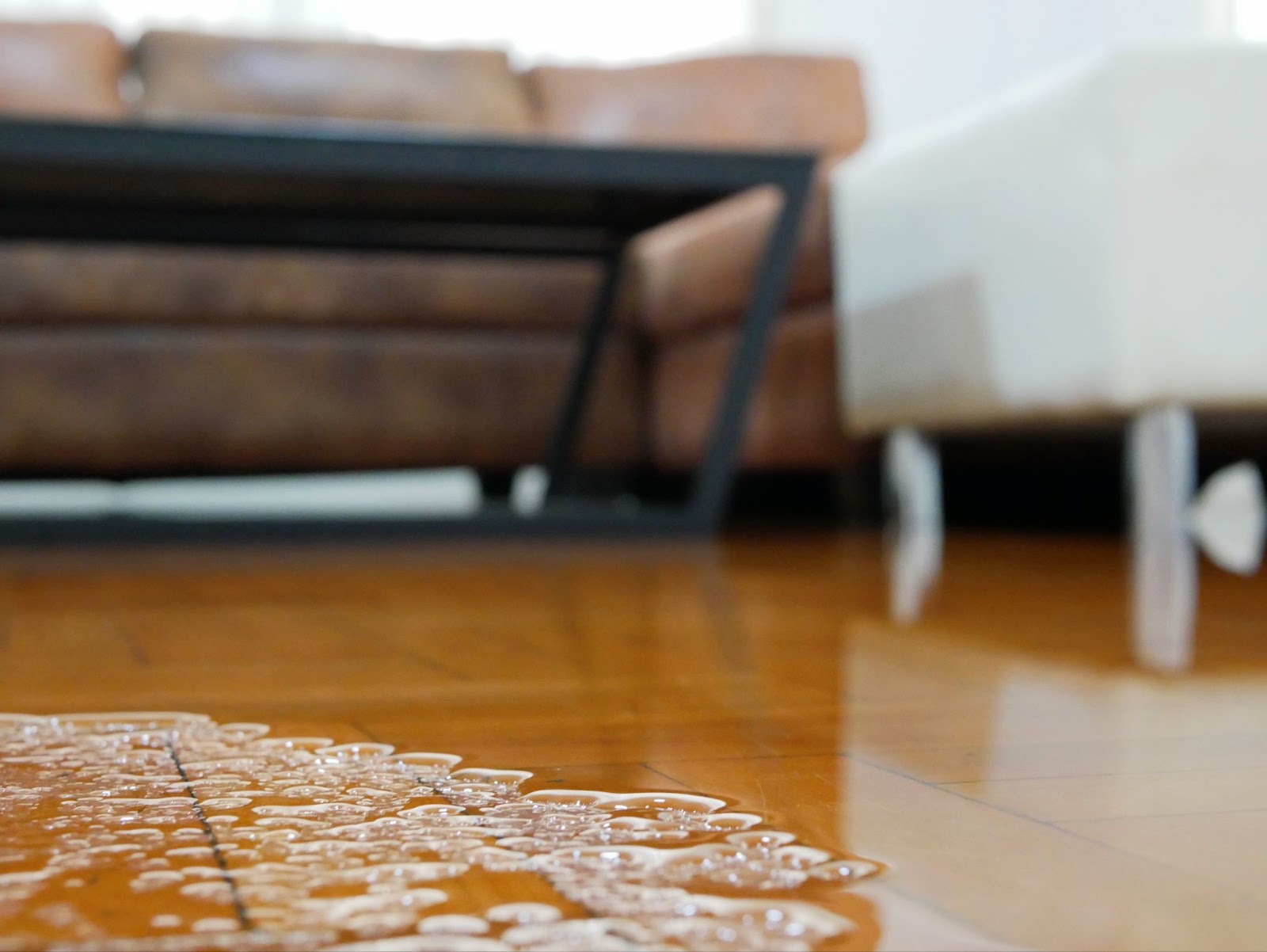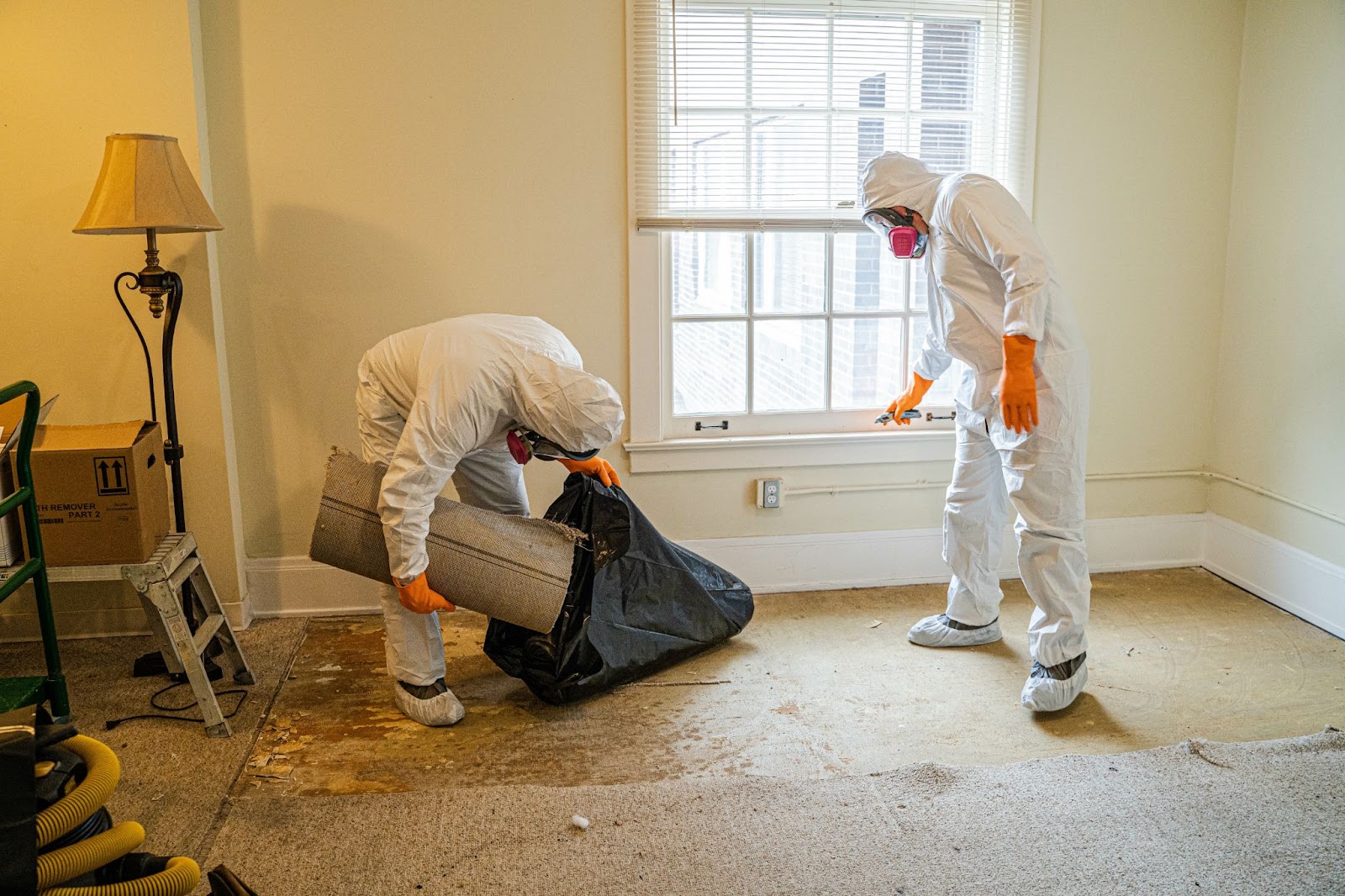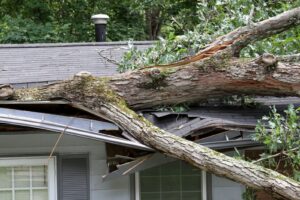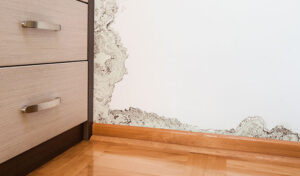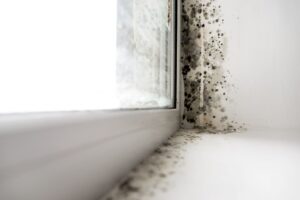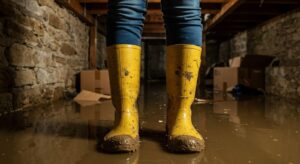Water damage happens fast, and if you wait, your furniture pays the price. In the moments after a flood, leak, or burst pipe, moisture begins to soak deep into wood, fabric, and padding. That’s when warping, staining, mold, and irreversible damage take hold. Quick action is the only way to prevent a total loss.
Water emergencies strike at any time. A washing machine hose might fail, a pipe could burst overnight, or a summer storm might flood your basement. These incidents are more common than you think and often happen with little warning. The impact on your home can be costly, especially when furniture is involved.
This guide will walk you through the immediate steps to take when disaster hits. You’ll learn how to stop the water, protect your furniture, and avoid mold before it takes over. With the right approach, you reduce the damage, save your favorite pieces, and get your home back to normal faster.
Stop the source and ensure safety
The first step in water damage emergencies is to take control of the situation. Before focusing on saving furniture, stop the flow of water at its source. Locate your home’s main water shutoff valve and turn it off immediately.
If the water is coming from an appliance like a dishwasher or washing machine, disconnect the appliance or close the supply valve to prevent further flooding.
Next, assess electrical risks. If water has pooled near outlets, cords, or appliances, turn off power to the affected area at the circuit breaker. This reduces the risk of electrical shock and prevents damage to electronics. Never step into standing water without checking for electrical hazards.
Once the environment is safe, move pets and children out of the area. Wet floors, exposed wiring, and slippery surfaces create serious safety risks. Creating a clear, hazard-free space allows you to work quickly and safely while you protect your belongings.
Stopping the water and securing the space sets the stage for everything that follows. The faster you act, the better your chances of saving furniture and minimizing damage throughout your home.
Remove furniture from the affected area
Once the water source is under control, shift your focus to your furniture. The faster you remove items from the wet zone, the better your chances of preventing permanent damage. Water soaks into wood, fabric, and padding within minutes, causing swelling, staining, and the early stages of mold growth. Speed is critical.
Start by identifying which pieces are most vulnerable. Prioritize upholstered items, wooden furniture, and anything resting directly on soaked flooring. Move them to a dry area with good airflow.
If you’re dealing with bulky or heavy items, use sliders under the legs or place towels beneath the base to help reduce friction. If lifting is necessary, ask for help to avoid injury and minimize strain.
In situations where you cannot move the furniture entirely, elevate it instead. Use bricks, plastic bins, or even stacked aluminum cans to lift furniture legs off the wet surface. Slip plastic sheeting or waterproof material underneath to act as a barrier between the furniture and the floor.
Removing or elevating furniture keeps moisture from being absorbed deeper and creates space for air to circulate. The sooner you take action, the more likely you are to save your furniture from warping, rotting, or becoming a breeding ground for mold.
Dry everything thoroughly
Once furniture is out of harm’s way, it’s time to tackle the moisture head-on. Drying everything as quickly and thoroughly as possible is your best defense against mold, warping, and lasting damage. Start by grabbing clean, absorbent towels to soak up any visible water. Pat surfaces dry instead of wiping to avoid spreading moisture deeper into the material.
Set up fans to keep air moving throughout the space. Position them to blow across wet surfaces and direct air out of the room. Adding a dehumidifier helps pull excess moisture from the air, speeding up the drying process and reducing the chance of mildew. If the weather permits, open windows to create cross-ventilation and flush out humid air.
Different materials need different care. If possible, remove the covers from cushions and pillows and stand them upright to allow airflow on all sides. If they feel overly saturated, place them in direct sunlight for short periods to encourage evaporation.
Upholstered furniture should be blotted with towels and dried using fans and dehumidifiers. Avoid using heat directly, as this can shrink fabric or damage the padding inside.
Wooden furniture needs gentle handling. Wipe down all surfaces with a soft towel and remove drawers or shelves to improve airflow. Place the pieces in a dry, shaded area to prevent cracking from sudden temperature changes. Keep an eye on joints and legs, where water may hide and slowly cause damage.
Thorough drying is the most time-sensitive part of water damage recovery. Acting fast now will preserve your furniture’s structure, protect its appearance, and prevent costly replacements down the road.
Treat and clean surfaces
After drying your furniture, the next step is to clean every exposed surface thoroughly. Water also carries dirt, bacteria, and contaminants that threaten the longevity and safety of your belongings.
Start with hard surfaces like wood, metal, or plastic. Use a soft, clean cloth to wipe away any remaining dirt or water stains. Avoid harsh scrubbing, which damages finishes or pushes moisture deeper into the material. For wooden pieces, a damp cloth followed by a dry one helps remove debris without oversaturating the grain.
Upholstered items require a gentler touch. Always blot instead of scrubbing. Press a clean towel or absorbent cloth into the fabric to lift out any residual moisture and grime. Scrubbing fabric distorts the weave, pushes stains deeper, or weakens delicate fibers. Once blotting is complete, allow the area to air dry completely before reassembling or using the furniture.
To prevent mold and bacteria growth, apply a disinfecting solution to all surfaces. Choose a mild cleaner or an anti-microbial spray that is safe for the material you’re treating. White vinegar mixed with water works well for non-porous surfaces, while a diluted fabric-safe solution may be better for upholstery. Always test in a small area first to avoid discoloration.
Treating and cleaning furniture immediately after a water incident not only protects its appearance but also prevents lingering odors, hidden bacteria, and future structural issues. A few extra minutes spent cleaning now saves years of use and keeps your home healthy.
Prevent mold and long-term damage
After water exposure, the real threat begins once moisture lingers. Mold and mildew develop in as little as 24 hours, spreading quickly through fabric, wood, and hidden corners. Taking steps to prevent growth early helps protect your furniture and your home from long-term damage.
Keep a close eye on every piece of furniture. Look for early signs of mold, such as black or green spots, fuzzy patches, or a powdery appearance on fabric and wood. Touch surfaces for dampness even after drying and inspect seams, joints, and cushion linings where moisture hides.
To absorb lingering moisture, place baking soda or silica gel packs around and under your furniture. Baking soda works well for upholstered items by pulling out hidden dampness and neutralizing odors. Silica packs are especially useful in enclosed spaces like drawers, cabinets, or between cushions. These simple tools prevent humidity from creeping back in.
If you notice a musty smell, act quickly. That odor is often the first sign of mold forming where it’s not yet visible. Isolate the piece, increase airflow, and reapply disinfectant to any area you suspect may be harboring bacteria. If possible, place it in a well-ventilated room or outdoors in a shaded, dry spot.
Mold is persistent but not inevitable. By staying alert, using moisture-absorbing tools, and responding to smells right away, you protect your furniture from long-term decay. These small efforts today prevent major professional restoration work in the future.
Know when to call professionals
While quick action and careful cleaning go a long way, some furniture may still require expert attention. Recognizing when to bring in professionals saves time, money, and peace of mind — especially when you’re dealing with valuable or heavily damaged pieces.
Look for signs that a piece may need professional restoration. These include deep water stains, persistent dampness, visible mold growth, warped wood, or sagging upholstery. If the internal frame feels unstable or if padding and cushions remain soaked after drying, the damage likely runs deeper than what surface-level treatments fix.
Professional restoration teams use advanced equipment that reaches places household tools cannot.
Industrial-grade dryers, moisture meters, and antimicrobial treatments allow them to eliminate hidden water and stop mold at the source. They also specialize in restoring wood finishes, reupholstering fabric, and rebuilding structural components without compromising the original design.
Deciding whether to restore or replace a piece depends on several factors. Sentimental value, cost of replacement, and the quality of materials all play a role. Solid wood furniture, antique items, and high-end upholstered pieces are often worth saving. On the other hand, mass-produced or low-cost furniture may be cheaper to replace than to repair.
Calling in professionals at the right time can mean the difference between salvaging a favorite piece and facing unnecessary loss. If in doubt, get an assessment. Many restoration companies offer evaluations to help you make an informed decision.
Total Flood and Fire Restoration is the partner you want by your side when every second counts
Total Flood and Fire Restoration brings the experience, equipment, and expertise needed to handle even the most severe water damage emergencies. Whether you’re dealing with a soaked sofa, warped wood furniture, or hidden mold in upholstery, our team acts fast to restore what matters most.
With 24/7 emergency service and a commitment to quality care, contact Total Flood and Fire Restoration and get the support you need to recover quickly, safely, and confidently.

